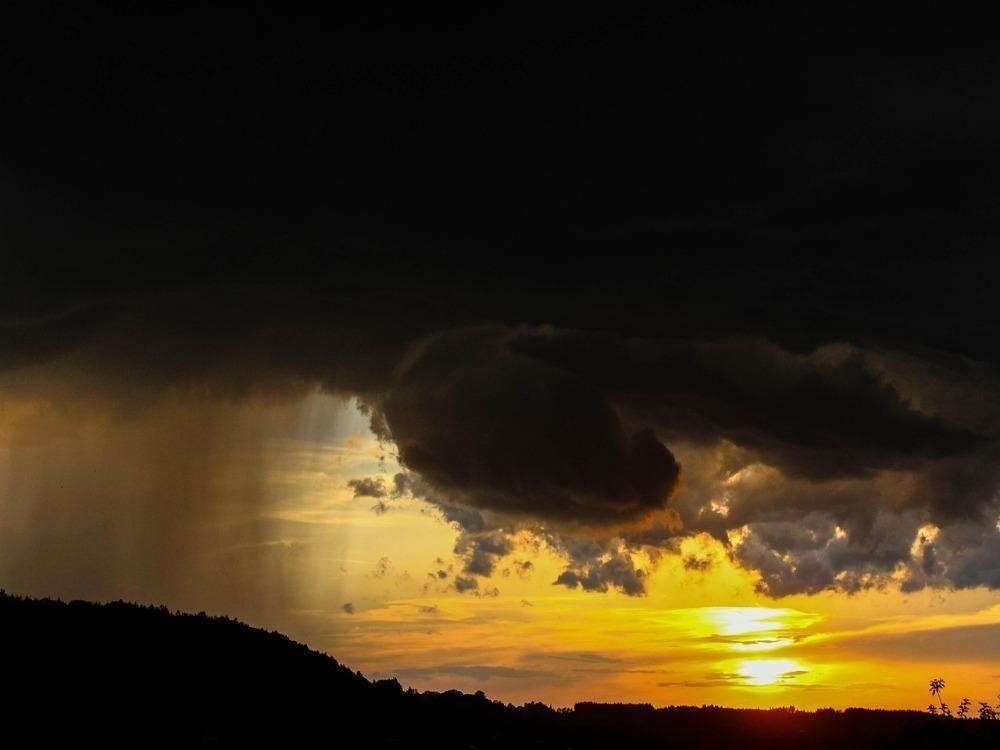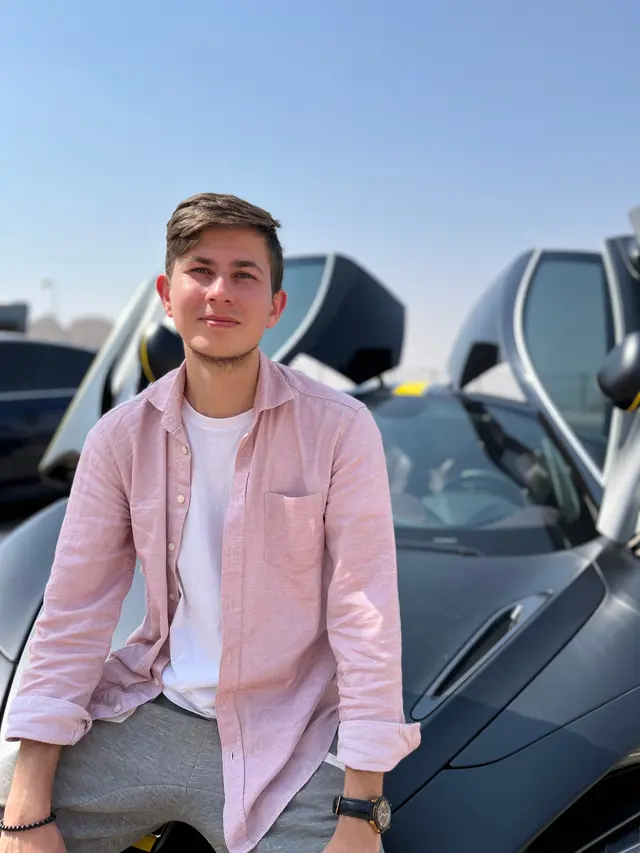Cloud seeding in Dubai: Everything you need to know

Key takeaways

Some people still think that changing the weather is a plot from a sci-fi movie. However, scientists have found a way to slightly change the weather more than a decade ago. For example, it's possible to trigger rain thanks to a process called cloud seeding.
It's a process that triggers the rain (sometimes, it causes snow) inside a cloud. As one can imagine, this idea is very popular in countries with hot climates. That's why cloud seeding in the UAE is now more common than ever.
This post explores cloud seeding, how it works, the science behind it, and so on. Check it out if you're planning to visit the UAE or Dubai specifically, as you may need car rent in Dubai to not get caught in the downpour of rain.
What is cloud seeding?

Cloud seeding is a scientific method that helps cause artificial rain. Scientists use specific substances to stimulate cloud activity and cause rain to fall. It doesn't mean rain always happens, but the process increases the chances when the weather is already favorable.
The method starts with a detailed weather analysis. Meteorologists use radar data, satellites, and ground observations. Once they confirm the right conditions, a plane flies into selected clouds. The aircraft releases specific particles that help form raindrops or ice crystals (in cases when someone needs to trigger snow).
These are the substances used in cloud seeding:
- Silver iodide. It has a structure similar to ice. It triggers condensation and helps clouds produce larger droplets.
- Potassium iodide. It works like silver iodide but has different chemical characteristics. It's less common.
- Dry ice. Solid carbon dioxide helps cool the cloud and form ice crystals quickly.
- Salt particles. Scientists use sodium chloride or calcium chloride in coastal regions.
As you see, it's possible to trigger rain or snow. However, as mentioned before, this process does require favorable conditions. For example, it's impossible to start without Dubai clouds, and that's only one of several conditions.
Cloud seeding in Dubai: Over two decades of innovation

Dubai started using cloud seeding in the early 2000s. The UAE has faced water scarcity and extreme heat for decades. So, the authorities invested in research to find new ways to increase rainfall. The country developed one of the most advanced rain-enhancement programs in the world over the past years.
The first official seeding missions happened more than 20 years ago. The UAE collaborated with international experts and launched long-term research projects. By 2010, the government created a national initiative for rain enhancement. They used advanced aircraft, ground stations, and weather models.
Today, it's rather common to see rain more often in Dubai. Therefore, visitors should plan their trips and rent vehicles to not get caught in the rain. While it's rarely raining cats and dogs in the city, it's not ideal to ruin a hairdo or to walk in wet clothes.
Therefore, consider renting a luxury vehicle like Lamborghini Urus or Cadillac Escalade to feel comfy. You can check out Trinity Rental as it has one of the largest collections of 80+ VIP models. Here's what the company offers:
- Trinity Rental owns modern cars with low mileage, including 2024 models.
- You pay zero deposit for any rental.
- The price includes VAT, full insurance, daily 300 km limit, Salik gates, and a full gas tank for every rent.
- Trinity Rental accepts cash, Visa, Mastercard, and cryptocurrency.
- A personal manager answers your questions 24/7.
- Trinity Rental brings the car to any location: airport, office, hotel, etc.

So, you can consider this company and its great range of vehicles. You should know that cloud seeding in the UAE is safe. Dubai doesn't only use traditional silver iodide or dry ice. It also uses other chemicals and unique approaches, but all of them are safe and won't harm you in any way.
Scientists in the UAE experiment with nanotechnology-based materials. These particles are smaller, lighter, and more reactive than conventional substances. They stick to water vapor faster, helping clouds produce rain more efficiently.
In addition to airborne seeding, Dubai also uses ground-based generators. These devices burn salt mixtures and send them into the atmosphere during favorable wind conditions to trigger rain seeding Dubai. Unlike many countries, the UAE uses a dual method, aircraft and ground seeding, depending on weather conditions.
Why use cloud seeding?

Dubai has extreme weather and growing population numbers. That's why rain enhancement through cloud seeding became a long-term strategy.
Here's a list of reasons why cloud seeding works well for Dubai:
- Dubai has thousands of farms, parks, and golf courses. Rain helps reduce water use from desalination plants.
- Natural rainfall is rare in the region. Artificial rain helps fill underground reservoirs and stabilize water levels.
- More rain boosts crop production. Farmers can maintain soil quality and reduce dependence on irrigation systems.
- The process helps Dubai respond to global climate shifts. It reduces dust storms and balances atmospheric conditions.
- It reduces the need for water imports or large-scale desalination. It also keeps local ecosystems more stable.
- The UAE supports innovation in weather modification. This approach helps local researchers stay ahead in the climate technology sector.
Dubai relies on cloud seeding because it fits the region's specific climate and to support local agriculture. The country doesn't depend on outdated techniques—it updates its technology regularly and tests new solutions all the time.
The process of cloud seeding in Dubai

The idea is that meteorologists apply combinations of substances to trigger a response from clouds. Here's how the process works step-by-step:
- Meteorologists identify target Dubai clouds with the right conditions.
- Planes fly above or through the cloud system.
- Pilots release particles into the cloud system.
- Water vapor condenses on these particles.
- Droplets grow and become heavy enough to fall as rain.
To sum up, cloud seeding doesn't create rain from nothing, as it's not magic. It "encourages" natural processes inside clouds through certain substances. It works best in moist conditions with pre-existing cloud formations.
The success rate depends on cloud thickness, wind speed, air temperature, and other natural factors. Scientists don't control nature, but they've found a way to influence, and only if the conditions are right.
Advantages of cloud seeding in Dubai

Cloud seeding isn't a magic trick; it's a method that works well in hot places like Dubai. Scientists don't rely on outdated ideas, as they use modern technology to influence cloud activity and improve weather conditions.
Here's a list that explains why this technology is beneficial in Dubai:
- Higher underground water levels. Artificial rain helps refill natural aquifers and stabilize the water table in the desert. It's a very convenient method to prevent extinction of many plants and animals, natural to that area of the desert.
- More rain for crops. Farmers produce better harvests when the soil stays moist for longer periods.
- Cleaner air. Rain reduces the amount of dust in the air and improves air quality during sandstorms or dry spells.
- Lower heat levels. Rain-cooled air helps reduce extreme temperatures during long hot months.
- Reduced use of desalinated water. Rainwater lets the government use less energy on turning seawater into drinkable water.
- Long-term climate control. Scientists use this process as part of broader strategies to manage weather shifts.
- Dual method flexibility. The UAE uses aircraft and ground-based tools, so seeding missions work in different weather patterns.
- Innovation through science. Nanotechnology helps scientists work with more reactive and lighter materials for better results.
- No major health risks. Small chemical doses don't impact people or ecosystems based on current research.
The method works because it fits Dubai's hot and dry environment. It's a solution that improves agriculture, supports water security, and helps with air quality. And all these benefits are without harmful consequences.
FAQ
What is cloud seeding?
It's a process that aims to trigger the rain from the clouds in the sky. It requires an aircraft or ground-based generators that release particles like silver iodide, potassium iodide, or dry ice (solid carbon dioxide) into clouds. These substances provide surfaces for water vapor to condense and form droplets. It's not a guarantee that the rain will begin, and the conditions must be favorable for success.
Is cloud seeding safe?
There are some concerns for the environment and health, mainly because the process uses chemicals. However, there are no reports that these substances have an impact. They're generally considered safe because of the smaller concentrations used.
Recent Articles
- Best Afternoon Tea in Dubai
- Quranic Park Dubai: A Visitor’s Guide to Faith and Nature
- Dubai Shopping Festival 2025-2026
- Top Luxury Rental Car Services in Dubai in 2025-26
- Top 10 Luxury Cars to Rent in Dubai 2025-26: Prices, Reviews & Booking
- Driving in Dubai: Your Ultimate Guide to Rules, Licenses & Safety
- UAE Driving License Guide: Using Foreign Licenses in UAE & Abroad
